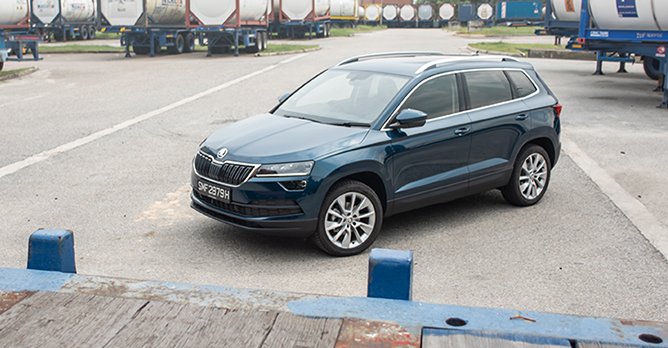Breaking down the different types of crossovers
05 Oct 2020|7,114 views
You must have heard the term 'crossover' a million times now. Even within our own articles, we've mentioned crossovers extensively. You've heard phrases like 'crossover-dominated market', 'increasing trend towards crossovers', and so on.
But, what exactly is a crossover? Defining a crossover is much more complicated than you'd imagine, especially since it's a fairly recent term to enter the automotive lexicon. Some might differentiate crossovers and SUVs in terms of construction - crossovers use a unibody platform (the type used by most typical passenger cars), whereas earlier SUVs were built on a body-on-frame platform, more similar to off-road vehicles or light trucks.
Of course, such a definition wouldn't really work nowadays, considering that most SUVs, even the most hardcore, off-road models, largely use unibody construction.
Nowadays, we tend to classify crossovers in terms of size - smaller, more compact SUVs that are primarily on-road focused. This helps to differentiate it from larger SUVs with more comprehensive off-road capabilities, although of course even such a definition isn't absolute or binding.
To further complicate things, there isn't just one 'type' of crossover in the market, either. No, there are in fact a wide variety of different types of crossover for different buyers.
Here, we give you a quick rundown of the different types of crossovers in the market.
Naturally aspirated, petrol
This is perhaps the simplest formula to understand - a Naturally Aspirated (NA) engine (the likes of which you'll find in popular passenger cars like the Hyundai Avante), packaged within a taller, boxier body. The experience will be familiar for drivers used to an NA car.
Such crossovers, including the Subaru XV, are not as common nowadays, mostly because of the trend towards turbocharging.
Turbocharged, petrol
Which brings us to arguably the most common configuration you'll see on the roads - a turbocharged petrol engine. With brands' continuing chase for better performance and fewer emissions, turbocharging has become the most practical and effective solution.
Turbocharging also allows additional power to be drawn out of a smaller capacity engine, which is a useful solution for a crossover (often bigger and heavier than a comparably-sized sedan).
Petrol-Hybrid
We are now also seeing many hybrid crossover's in the market. As more brands increasingly pursue electrification, hybrid powertrains on a crossover makes a ton of sense - it further augments a crossover's practicality and utility with added range, comfort and reduced emissions.
Cars like the new Hyundai Kona perfectly encapsulate this new formula - capable powertrain, ample functionality and features, and practical space.
Electric
It's also no surprise that we're also seeing electric cars now taking the form of crossovers. Crossovers are ideally suited to electric application - a larger body size allows more space to fit the electric components, without significantly sacrificing overall usability and space.
With car's like the Audi e-tron and the Hyundai Kona Electric, we see that electric crossovers are a trend that will only continue to grow.
You must have heard the term 'crossover' a million times now. Even within our own articles, we've mentioned crossovers extensively. You've heard phrases like 'crossover-dominated market', 'increasing trend towards crossovers', and so on.
But, what exactly is a crossover? Defining a crossover is much more complicated than you'd imagine, especially since it's a fairly recent term to enter the automotive lexicon. Some might differentiate crossovers and SUVs in terms of construction - crossovers use a unibody platform (the type used by most typical passenger cars), whereas earlier SUVs were built on a body-on-frame platform, more similar to off-road vehicles or light trucks.
Of course, such a definition wouldn't really work nowadays, considering that most SUVs, even the most hardcore, off-road models, largely use unibody construction.
Nowadays, we tend to classify crossovers in terms of size - smaller, more compact SUVs that are primarily on-road focused. This helps to differentiate it from larger SUVs with more comprehensive off-road capabilities, although of course even such a definition isn't absolute or binding.
To further complicate things, there isn't just one 'type' of crossover in the market, either. No, there are in fact a wide variety of different types of crossover for different buyers.
Here, we give you a quick rundown of the different types of crossovers in the market.
Naturally aspirated, petrol
This is perhaps the simplest formula to understand - a Naturally Aspirated (NA) engine (the likes of which you'll find in popular passenger cars like the Hyundai Avante), packaged within a taller, boxier body. The experience will be familiar for drivers used to an NA car.
Such crossovers, including the Subaru XV, are not as common nowadays, mostly because of the trend towards turbocharging.
Turbocharged, petrol
Which brings us to arguably the most common configuration you'll see on the roads - a turbocharged petrol engine. With brands' continuing chase for better performance and fewer emissions, turbocharging has become the most practical and effective solution.
Turbocharging also allows additional power to be drawn out of a smaller capacity engine, which is a useful solution for a crossover (often bigger and heavier than a comparably-sized sedan).
Petrol-Hybrid
We are now also seeing many hybrid crossover's in the market. As more brands increasingly pursue electrification, hybrid powertrains on a crossover makes a ton of sense - it further augments a crossover's practicality and utility with added range, comfort and reduced emissions.
Cars like the new Hyundai Kona perfectly encapsulate this new formula - capable powertrain, ample functionality and features, and practical space.
Electric
It's also no surprise that we're also seeing electric cars now taking the form of crossovers. Crossovers are ideally suited to electric application - a larger body size allows more space to fit the electric components, without significantly sacrificing overall usability and space.
With car's like the Audi e-tron and the Hyundai Kona Electric, we see that electric crossovers are a trend that will only continue to grow.
Thank You For Your Subscription.

























